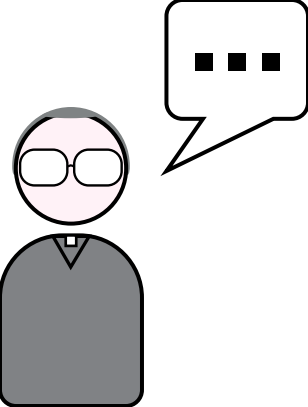A New Decade; Forming Achievable Resolutions

Every year, the dogs, cats, squirrels and birds go to sleep on New Year’s Eve and wake up the next morning on New Year’s Day, seemingly oblivious to why everyone is suddenly on a self-improvement kick. They watch the (often hungover) humans race to gyms and purchase Peloton bike machines, juice cleanses and Rosetta Stone packages. They may wonder, “What exactly happened last night to make the humans suddenly change their lifestyles?”
While New Year’s Day is in reality only a numerical shift in the calendar year, it often represents a deeper shift for many people, causing them to reflect on what worked for them in the previous year and what they would like to change in the new year.
However, the focus on New Year’s Resolutions can be problematic, according to Seattle University’s Director of Wellness and Health Promotion Chris Fiorello.
Fiorello finds that change can happen any day of the year—it doesn’t need to wait for Jan. 1. As a result, he said that orienting change around the New Year can cause people to procrastinate on making changes—they think that change is limited to specific dates, instead of it being possible any day of the year.
“I think people either put things off, or they have this idea that if I start something on the New Year’s, it’s going to be perfect all year,” he said. “And if they have a setback, they think the entire year is blown.”
Fiorello also said that at the beginning of the year, it’s important to be cautious of what companies are selling for New Year’s Resolutions. He said that when looking into gym memberships or other wellness programs, the philosophy of the organization should align with your goals.
“I would always just be cautious about anything that’s selling itself to you. There are a ton of free resources offered that are out there,” he said. “Something that’s sustainable isn’t going to be in a package deal.”
PHYSICAL WELLNESS
When making goals for physical wellness, it can be difficult to navigate societal and cultural norms—particularly for women, people of color and queer folks. When the standards for beauty are oriented towards a white male lens, norms of health and fitness can be inseparable from an unrealistic body ideal.
Fiorello shared that good resources for physical health can be organizations like Health at Every Size or Opal. These organizations aim to “celebrate body diversity” and practice “compassionate self-care” in a way that’s aware of how food and eating can be sensitive topics for people with a history of eating disorders.
The key, he said, is to focus change around what you are intrinsically motivated to do—as opposed to extrinsic motivation, like how your peers see you, what your parents want for you, or whatever societal pressures there may be.
For example, he said that resolutions that focus on weight loss or body types often miss the mark, as they focus on visible characteristics that may or may not actually have anything to do with health. He said that more wellness-oriented goals should focus on things like cardiovascular health or mental health, instead of beauty standards.
“Someone’s having adipose tissue doesn’t mean that they can’t run a marathon, right? They may actually be in really great cardiovascular health,” he said. “So you can’t size somebody up in terms of their health just by looking at them. And I think that that’s like a critical thing to keep in mind. And so when folks talk about wanting to set a weight loss goal, it’s something that makes me a little nervous.”
If someone is worried about feeling out of breath climbing stairs, they could be better-served by aiming for better heart health, instead of weight loss. These kinds of goals orient themselves towards feeling better, as opposed to looking a certain way.

EMOTIONAL WELLNESS
For those trying to improve their emotional health but unsure where to start, it can be helpful to start small with minor habits. This can include journaling, eating regularly, and meditating.
Establishing better sleep hygiene can be a powerful tool for improving how you feel day-to-day and even improving grades, according to Fiorello. This can mean that you go to bed at the same time every night, or consistently getting eight hours of sleep a night. Such a task may sound overwhelming, but committing to a bedtime for six weeks can help establish a long-term habit.
Fiorello also said that there are several resources at Seattle U for emotional wellness, including light therapy lamps—available for use in the HAWC lounge—and an app called Sanvello that offers free cognitive behavioral therapy for Seattle U students.
Sanvello—formerly called Pacifica—aims to help with anxiety and depression. It checks in on users to refocus and reframe the way they think about their lives, and it uses clinical techniques to improve mental health. Though this app ordinarily costs money, Seattle U offers a premium subscription to its students for free.
Changing wellness habits can seem daunting, but there are other small changes that can be easily implemented into a daily routine. Starting a gratitude journal can be an excellent place to start—listing three items for which you’re grateful every night, with the list eventually growing to five or 10 items. Such a routine can combat the negative rumination habits of anxiety and depression to improve mental health.
CAREER GOALS
Especially as internship applications start to open, some students may be turning their attention to their career and professional goals. This can entail a variety of specific or general achievements—some may aim to learn Spanish, while others may be thinking about networking.
Associate Director of External Relations at Career Services Carol Lwali said that when creating goals, it’s important to start with self-assessment.
She said that this entails questions like, “Where am I at?” in order to figure out what you are motivated to do—she said that you can then key into that motivation to actually accomplish those goals.
“Are you just setting a goal because other people are doing it? Or is it something you yourself are hoping to do just for your own personal reasons?” she said. “When you go from the ‘why,’ you can start asking about ‘What are my interests? What are my strengths? Do these align with my values?’”
To make these goals achievable, Lwali talked about “SMART” goals—goals that are Smart, Measurable, Attainable, Realistic, and Trackable. Further, she said that sharing this goal with someone can hold you accountable, as well—this could be a friend or a professional mentor.
That said, Lwali believes that it’s important to have grace with yourself—for this reason, she emphasized the use of “intentions,” rather than “goals.”
“When goals tend to be very fixed in a way, and then we get stuck in that, or we feel like, ‘Oh, gosh, I didn’t make it and therefore I failed,” she said. “So it’s really important to give yourself grace. I even go more for setting intentions as opposed to goals because I feel like goals are more like a destination…But if you are saying I want to improve in something, there’s such a thing as continuous improvement, or continuous growth.”
Most importantly, though, Lwali said that while accountability and measurable goals are helpful, you should also allow yourself room and flexibility.
“Maybe it is your timeline that needs to be adjusted or your area of focus may need to be adjusted,” she said.
“As you’re going towards your goal, always leave room for reflection and reevaluation so you can adjust accordingly. Things can be salvaged, so don’t get discouraged.”

Sundborg shared his resolutions for the New Year with The Spectator in an email statement:
“I have two resolutions for 2020:
I resolve to engage every day this year with a Seattle U student in order to learn from them about their experience.
I resolve to double my technology skills, minimal as they currently are!”
Josh Merchant may be reached at jmerchant@su-spectator.com

